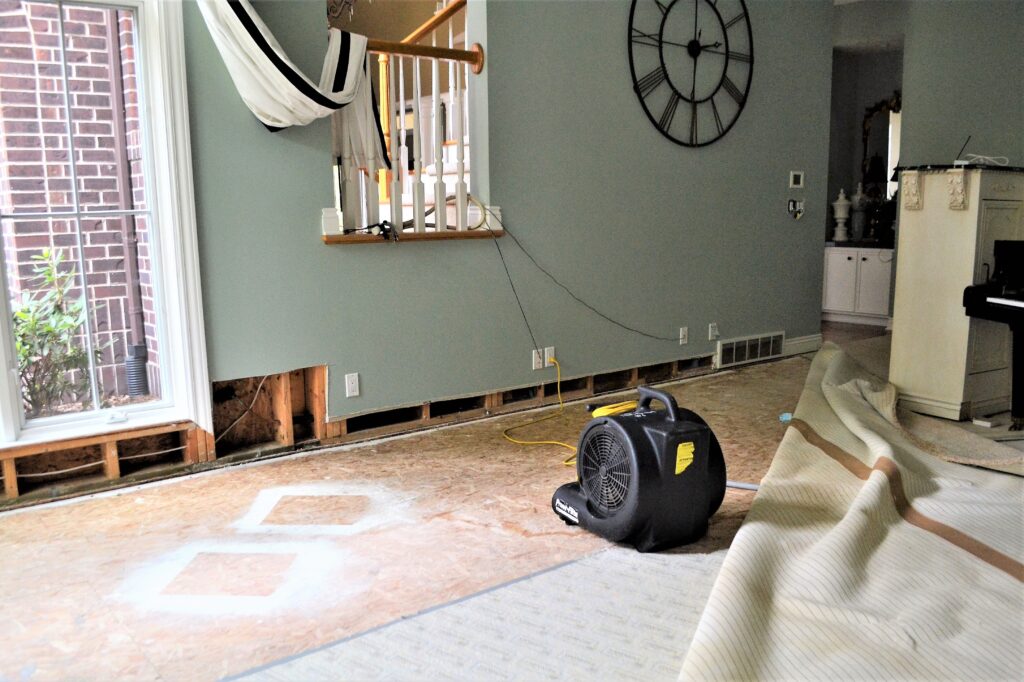
How Long Does Water Damage Restoration Take?
Share Post :
Water damage is a homeowner’s nightmare, often occurring unexpectedly and escalating quickly. Whether caused by a burst pipe, overflowing appliance, storm, or even flooding, the clock starts ticking the moment water enters your property. Quick action is essential to reduce damage, prevent mold growth, and protect your home or property from long-term effects.
But how long does the water damage restoration process really take? The timeline depends on various factors. From the severity of the water damage to the methods used and the drying process, there isn’t a one-size-fits-all answer.
This guide will break down the water damage restoration process step by step and outline common timeframes, giving you a clear idea of what to expect while keeping your health, safety, and property in mind.
Understanding the Water Damage Restoration Process
Before we explore the timeline, it’s essential to understand the general water damage restoration process. Here’s an overview of what typically happens during restoration:- 1. Assessment and Inspection
- 2. Water Removal and Extraction
- 3. Drying and Dehumidification
- 4. Cleaning and Sanitization
- 5. Restoration and Repairs
General Timeline for Water Damage Restoration
Now that we’ve covered the process, here’s a breakdown of how long each stage typically takes:1. Assessment and Inspection (1–2 Hours)
This stage happens immediately upon the arrival of water damage restoration professionals. They usually complete this within an hour or two, depending on the size of your property and the complexity of the water intrusion. Factors that affect timing:- • Minor Incidents (e.g., small leaks): 3–7 days
- • Moderate Incidents (e.g., burst pipes affecting multiple rooms): 1–2 weeks
- • Major Incidents (e.g., widespread flooding): 2–4 weeks or longer
Think About Long-Term Consequences
Time isn’t the only factor to consider with water damage restoration—it’s also about acting quickly to avoid costly secondary damage. Mold can begin to grow within 24–48 hours, wood can warp, and drywall can crumble if not addressed immediately. Prompt action is vital for ensuring cost-effective and efficient restoration.Can You DIY Water Damage Restoration?
While small spills and minor leaks can potentially be handled DIY-style with a mop, towels, and a dehumidifier, larger water damage incidents require professional expertise. Trained professionals not only have industrial equipment but also the experience to detect hidden moisture and protect your home from long-term issues like mold or structural instability.Choosing the Right Restoration Partner
Selecting a trusted restoration company is crucial. Look for professionals who prioritize:- • Speed: Quick response times to minimize damage.
- • Transparency: Clear communication of timelines and expectations.
- • Expertise: Experience in handling every stage of restoration effectively.
- • Certifications: IICRC certification ensures quality workmanship.
Safeguard Your Home with Preventive Measures
While water damage can’t always be prevented, taking precautionary steps can reduce risk.- • Regularly inspect your roof, plumbing, and appliances for leaks.
- • Ensure proper drainage around your property to avoid flooding.
- • Install a sump pump and maintain it annually.
- • Know your insurance coverage for water damage incidents.

